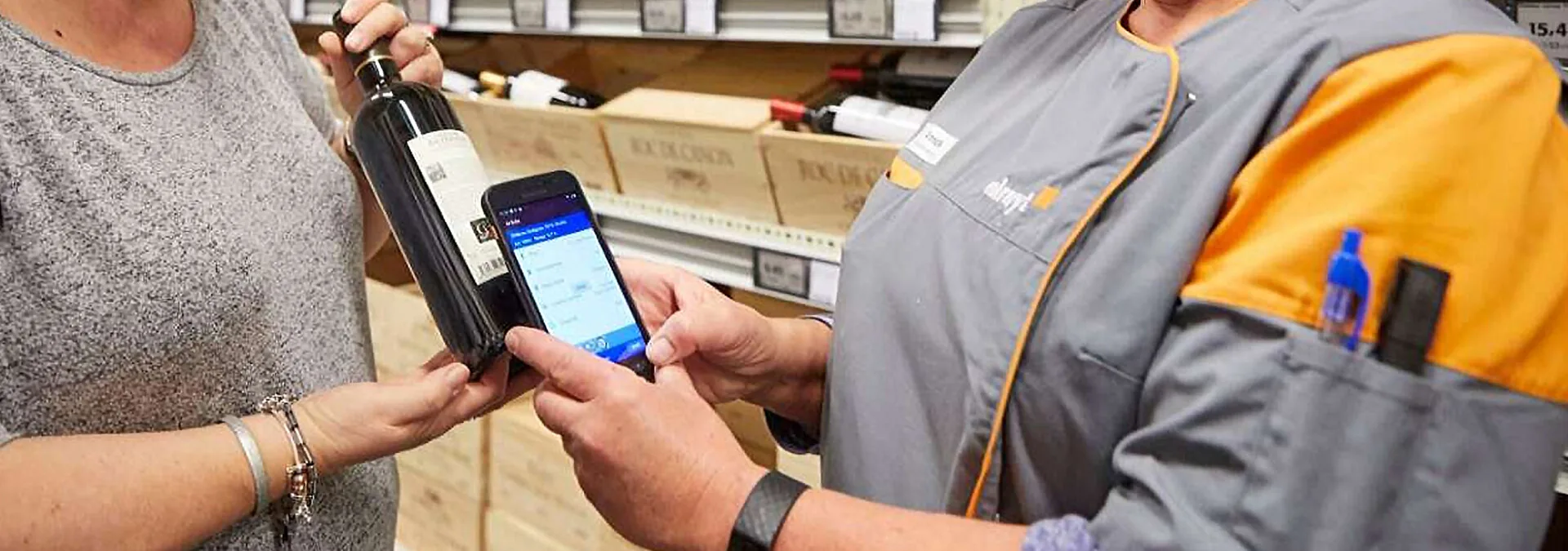
Technology Category
- Platform as a Service (PaaS) - Application Development Platforms
- Sensors - Barcode Readers
Applicable Industries
- Consumer Goods
- Retail
Applicable Functions
- Product Research & Development
Use Cases
- Inventory Management
- Retail Store Automation
Services
- System Integration
The Customer
Colruyt
About The Customer
Colruyt Group is a family-owned retail corporation that manages Belgium’s largest supermarket and several retail subsidiaries. The group is an industry innovator in retail technology adoption and is investing 17 million euros in its digital transformation program. The company is on a mission to improve operational efficiencies that underpin outstanding customer experiences. As part of this drive, Colruyt wanted to invest in its digital future by creating ‘informed and connected store associates,’ and evolve to a future-ready technology platform.
The Challenge
Colruyt Group, Belgium's largest retail conglomerate, was on a mission to optimize its retail operations and enhance customer experiences. As part of its digital transformation program, the company aimed to streamline store processes, improve co-worker and customer communications, and drive innovation. The group decided to replace shared dedicated scanning devices with personal consumer devices that would be easy for store staff to operate and always stay connected. They sought a solution that offered superior software-based barcode scanning, shared their vision for a platform to support future innovation, and was easy to integrate with its suite of apps, supported diverse frameworks and mobile architectures.
The Solution
Colruyt partnered with Samsung and Scandit to replace expensive dedicated scanners with a 'digital store assistant' smartphone app. The company provided employees with a company-owned business only (COBO) Galaxy XCover 4S smartphone, powered by Scandit’s barcode scanning solution. The Scandit-powered smartphones were found to be fast, cost-effective, and easy to integrate into their suite of apps, offering high-performance scanning of 1D and 2D (QR codes) barcodes. The transformation began in a phased manner, starting with Colruyt Lowest Prices stores, their largest and renowned supermarket chain. The Scandit solution surpassed competitors on various parameters including multiple store tasks, future-ready innovation platform, high-performance, and ubiquity.
Operational Impact
Quantitative Benefit

Case Study missing?
Start adding your own!
Register with your work email and create a new case study profile for your business.
Related Case Studies.
.png)
Case Study
Improving Vending Machine Profitability with the Internet of Things (IoT)
The vending industry is undergoing a sea change, taking advantage of new technologies to go beyond just delivering snacks to creating a new retail location. Intelligent vending machines can be found in many public locations as well as company facilities, selling different types of goods and services, including even computer accessories, gold bars, tickets, and office supplies. With increasing sophistication, they may also provide time- and location-based data pertaining to sales, inventory, and customer preferences. But at the end of the day, vending machine operators know greater profitability is driven by higher sales and lower operating costs.

Case Study
Improving Production Line Efficiency with Ethernet Micro RTU Controller
Moxa was asked to provide a connectivity solution for one of the world's leading cosmetics companies. This multinational corporation, with retail presence in 130 countries, 23 global braches, and over 66,000 employees, sought to improve the efficiency of their production process by migrating from manual monitoring to an automatic productivity monitoring system. The production line was being monitored by ABB Real-TPI, a factory information system that offers data collection and analysis to improve plant efficiency. Due to software limitations, the customer needed an OPC server and a corresponding I/O solution to collect data from additional sensor devices for the Real-TPI system. The goal is to enable the factory information system to more thoroughly collect data from every corner of the production line. This will improve its ability to measure Overall Equipment Effectiveness (OEE) and translate into increased production efficiencies. System Requirements • Instant status updates while still consuming minimal bandwidth to relieve strain on limited factory networks • Interoperable with ABB Real-TPI • Small form factor appropriate for deployment where space is scarce • Remote software management and configuration to simplify operations

Case Study
How Sirqul’s IoT Platform is Crafting Carrefour’s New In-Store Experiences
Carrefour Taiwan’s goal is to be completely digital by end of 2018. Out-dated manual methods for analysis and assumptions limited Carrefour’s ability to change the customer experience and were void of real-time decision-making capabilities. Rather than relying solely on sales data, assumptions, and disparate systems, Carrefour Taiwan’s CEO led an initiative to find a connected IoT solution that could give the team the ability to make real-time changes and more informed decisions. Prior to implementing, Carrefour struggled to address their conversion rates and did not have the proper insights into the customer decision-making process nor how to make an immediate impact without losing customer confidence.

Case Study
Digital Retail Security Solutions
Sennco wanted to help its retail customers increase sales and profits by developing an innovative alarm system as opposed to conventional connected alarms that are permanently tethered to display products. These traditional security systems were cumbersome and intrusive to the customer shopping experience. Additionally, they provided no useful data or analytics.





